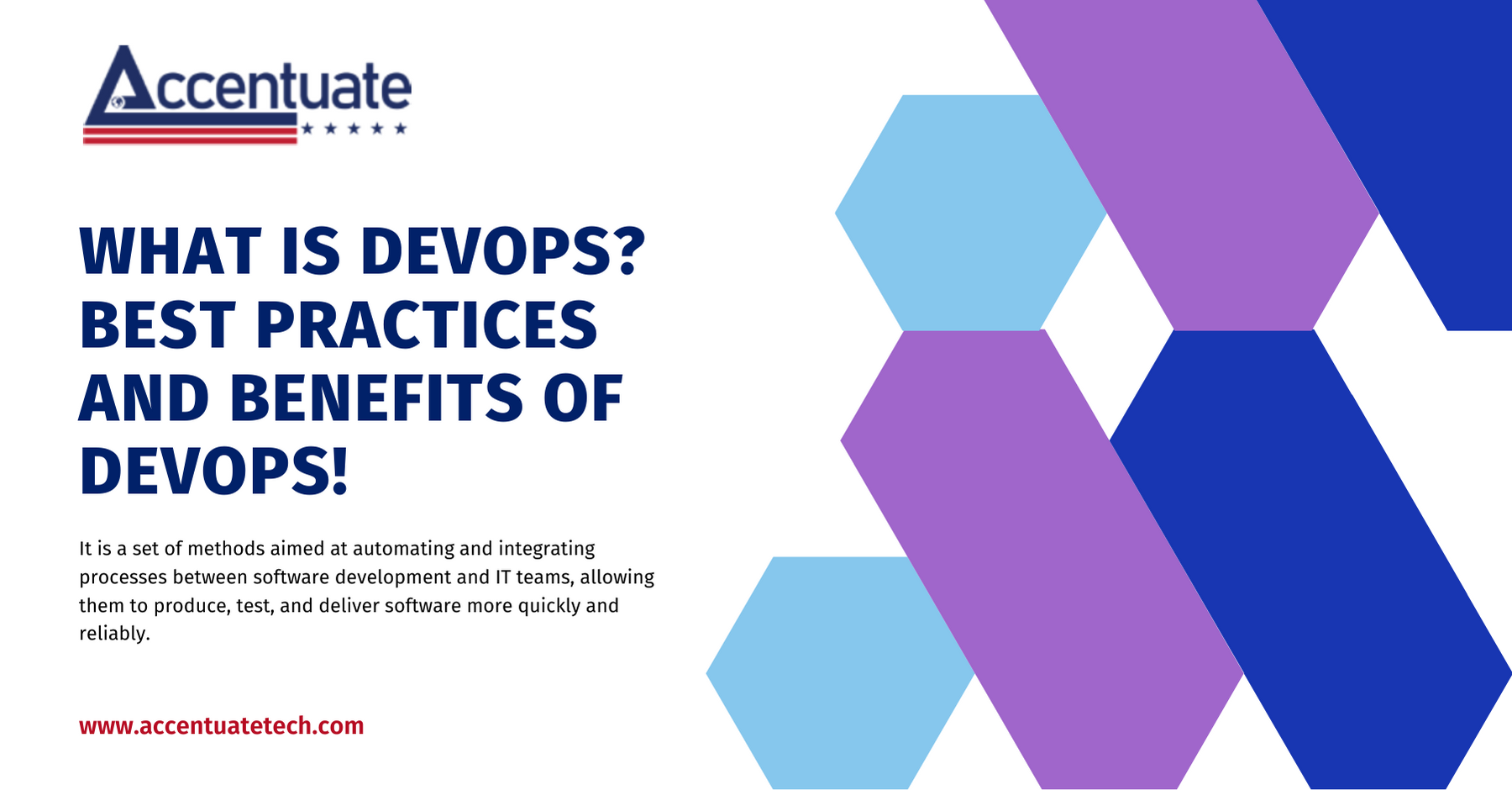Introduction DevOps is a concept that was coined by combining the words “development” and “operations,”…
DevOps is a concept that was coined by combining the words “development” and “operations,” and it refers to a culture shift that bridges the gap between development and operations teams’ communication, who have traditionally operated separately. It is a set of methods aimed at automating and integrating processes between software development and IT teams, allowing them to produce, test, and deliver software more quickly and reliably.
DevOps is visualized as an infinite loop comprising the steps: plan, code, build, test, release, deploy, operate, monitor, then back to plan, and so on.
Evolution of DevOps
DevOps, coined by Patrick Debois, has evolved into a vital discipline for reaping the benefits of Agile, ensuring rapid, iterative code creation and rapid, iterative code deployment! When IT operations and software development communities raised concerns about what they saw as a fatal degree of dysfunction in the industry between 2007 and 2008, the DevOps movement began to take shape.
DevOps has steadily gained popularity and supporters since Gene Kim’s The Phoenix Project, and is now considered a critical component of any Agile technology business. As a result, DevOps is now supported by large organizations and a wide range of technology providers. DevOps positions are becoming increasingly common – and the usual – in technology companies.
With the rise of AI and machine learning in all elements of the software lifecycle, AI for DevOps is beginning to make DevOps smarter, faster, and more seamless – while there is still more work to be done.
Business benefits of leveraging DevOps
- Faster delivery time: DevOps’ key principles – automation, continuous delivery, and a quick feedback cycle – are all aimed at making software development faster and more efficient. DevOps is an evolutionary extension of the Agile methodology that uses automation to ensure a seamless SDLC flow. By encouraging a collaborative culture, it is possible to receive immediate and ongoing input, allowing any bugs to be repaired quickly and releases to be completed more quickly.
- High collaboration between teams (Business/Dev/Ops): Development teams must now, more than ever, break through inter-departmental barriers and interact and communicate in a dynamic, round–the–clock environment. DevOps opens the way for greater business agility by fostering a culture of reciprocal collaboration, communication, and integration across an IT organization’s internationally distributed teams. In such a positive DevOps environment, the previously established roles-based boundaries are blurring. The quality and timeliness of deliverables are the responsibility of the entire team.
- Greater customer experiences: Organizations may enhance their deployment frequency by 200x, recovery durations by 24x, and change failure rates by 3x by implementing DevOps. It is feasible to assure the dependability and stability of an application after each new release by automating the delivery pipeline. Organizations gain from increased customer satisfaction when applications work flawlessly in production.
- Early defect detection: The collaborative DevOps environment encourages team members to share their knowledge. The code is continuously monitored and tested, which helps to enhance the overall build quality. Teams are given the freedom to exchange their input with one another, allowing for early detection and resolution of errors.
- Continuous Release and Deployment: Today’s software development processes necessitate teams delivering high-quality software on a consistent basis, reducing time-to-market, and adapting shorter release cycles. DevOps makes this possible by automating the process. The Dev and Ops teams can develop and integrate code nearly instantly with the help of an automated CI/CD pipeline. Furthermore, when QA is embedded and automated, it looks after the code’s quality. As a result, DevOps encourages more efficiency, higher quality, and more frequent and continuous releases.
- Innovative mindset: DevOps automates operations, distributes efficient releases, and ensures that builds are of high quality. This means that the deployment phases are more relaxed, the teams are more rested, and there is a lot of room for creative problem-solving.
DevOps Best Practices
DevOps necessitates teams participating in more in-depth – and often more tough – talks, which can be unsettling. The end result will be improved teamwork and the ability to move forward more quickly and accurately than ever before.
These DevOps best practises cover the whole project lifecycle, from early planning through continuous delivery and automation.
- As an early chance for the team to successfully drive change, gain the active participation of stakeholders.
- Allow developers and testers to test code early and often by automating testing.
- At each stage, introduce change management, bringing enterprise-level challenges to the attention of a larger audience.
- Create system-wide configuration management architecture that streamline activities and provide IT leaders more visibility.
- Define integrated deployment best practises and make sure they’re followed by everyone in the development community, both internally and externally.
- As soon as new builds are released, make sure users have access to development assistance.
- Update code repositories on a regular basis to ensure that modifications are seamlessly integrated into the workflow.
- Make use of continuous deployment tools to ensure that new features are introduced to the organization as rapidly as possible.
- Continuous delivery allows you to build, release, and test code more quickly while adding considerable value to the organization.
- Automate dashboards so that all team members and leadership may instantly spot bottlenecks and investigate any obstructions. (Key Quality metrics like as requirements traceability, requirements coverage, and overall test coverage are displayed in Jira dashboard.)
- Ensure that applications have proper monitoring, which is typically automated, so that teams can detect problems with production code before they become a problem.
DevOps tips
One of the main advantages of DevOps is that it allows firms to have a better understanding of their people, processes, and automation, which can help discover places where communication is lacking or consistency is lacking. Developing into a genuine DevOps organization necessitates a substantial personal engagement on the part of leadership, as well as a long-term commitment to excellence across the board.
Maintaining this rigid structure also necessitates partnering with vendors who support working in a real DevOps environment, as interacting between DevOps and Agile teams can be difficult.
Conclusion
We at Accentuate have a DevOps as a Service culture in place, in order to build high-quality applications by promoting transparency and open communication between our development and operations teams.
DevOps approaches allow us for gradual implementation, so we don’t have to make all of the necessary modifications and upgrades right now. We ensure that we develop and deliver solid software solutions that help firms achieve their business objectives efficiently by following the DevOps techniques outlined above.






